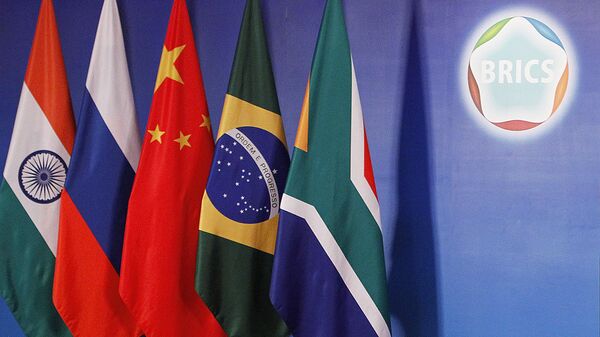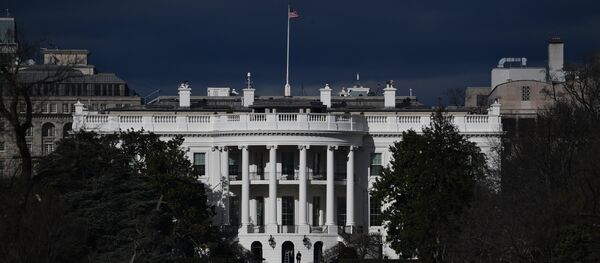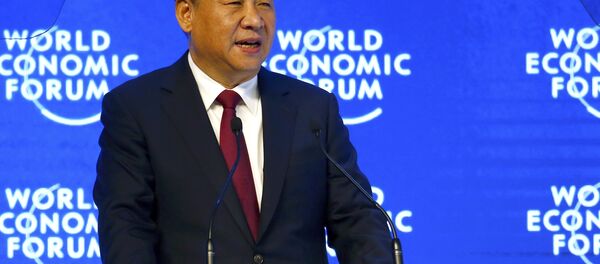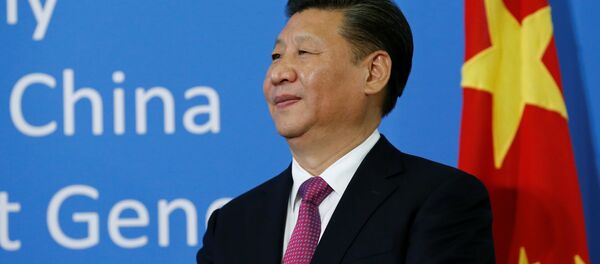President Donald Trump, the representative of the biggest of the “old successful” economies (the so called G7 group, formed back in the 1970s) was accused of protectionism. This was something new and unexpected for G20, a group created with the specific aim of fighting “protectionist instincts,” with the United States supposedly playing the role of the main lobbyist of free trade.
Sanctions as "Adhesive" for the West
So, even though these sanctions have so far failed to return to the “revolutionary” regime in Kiev its “counterrevolutionary” territories in the Russian-speaking east and south, attempts to economically strangle Donbass, Crimea and Russia as a whole will stay with us for duration. These sanctions are not needed by the people of Russia or Ukraine, but they help to keep the Western alliances and their loyal elite in Kiev together.
However, the recent American bill on anti-Russian sanctions, approved by the US congress’s House of Representatives, obviously went too far even for European politicians. The bill was criticized in a statement of the European Commission, and members of the business community questioned the legality of additional scrutiny and even punishments, which the bill imposes on the businessmen having connections to the Kremlin.
Wider Context
Anything can be a reason for sanctions from today’s Western world – the willingness of Crimeans to live in Russia, China’s attempt to build artificial islands in South China sea or even Poland’s judicial reform. Viewed in a wider context, the anti-Russian sanctions fit a general pattern of America’s and the EU’s attempts to economically sideline not just Russia, but any potential economic competitors, including China and other BRICS countries (BRICS standing for Brazil, Russia, India, China and South Africa). The long history of the economic isolation of the former Soviet Union and Mao’s People’s Republic of China seems to confirm the feasibility of such plans on the side of the US and the EU. So, it is the West, and not Russia or China who does not want free trade.
What will be Russia’s response?
The Russian president Vladimir Putin at the summit in Hamburg called the anti-Russian economic sanctions “a hidden form of protectionism.” Moscow on a number of occasions stated that “sanctions are not our initiative” and vowed to continue looking for trade deals with the EU and other Western entities.
The irony of history is that supposedly “not open societies” of Russia and China at the G20 summit spoke out against protectionism, while the president of the biggest “open society” Donald Trump used protectionist rhetoric.
Ways to the Future
Whatever our old hopes and new expectations, one new development has to be admitted and accepted: the old core-periphery model of globalization is becoming simply dangerous for sustainable development.
The “core” in the old form of the G7 countries is no longer as all-mighty and reliable as before, and its “peacemaker credentials” are irrevocably tarnished by its interventions in the former Yugoslavia, Iraq, Libya and Syria. The former periphery (especially the BRICS countries) is no longer the periphery any more, having gained substantial economic and political weight. So, the old “core-periphery” model, already characterized by imbalances and inequality, has to give way to “no core – no periphery” model of BRICS + (meaning BRICS plus its members’ regional and non-regional partner countries).
In a way the ideology of BRICS + could perhaps be called a different form of globalism. In some ways, BRICS+ is similar to the combination of TPP and TTIP, once lobbied for by the former president Obama. Just like BRICS+, the TPP-TTIP combination also includes five key pillars (also spread representatively across continents), namely the US, Japan, Canada, Australia and the EU.
The fact that BRICS countries are located on different continents (Russia, China and India being placed in Eurasia, while Brazil is in south America and South Africa occupies the farthest tip of the African continent) – this fact had long been seen as a weakness of BRICS. “What can such distant lands have in common?” – so sounded the common wisdom. But seen from the globalization point of view, this weakness becomes a strength. Located on three different continents, the BRICS countries might become “poles of attraction” for the developing economies of the “global South,” offering what might be termed as “balanced regionalism” as an attractive alternative to the old “core and periphery” model.
China’s One Belt One Road is a good example of an integration project which gives a chance to three beneficiaries: Russia, the developing economies located along the route of the ancient Silk Road and the countries of the former Soviet Union.
The EU member states are also going to be beneficiaries, with the Silk Road routes ultimately leading to their territories. And there are other examples of the budding BRICS+ relationships:
Russia-centered Eurasian Economic Union has a free trade agreement (FTA) with Vietnam; Latin American MERCOSUR union of countries (with Brazil at its center) has a free-trade agreement with Israel.
No More "Forced" Globalizations
BRICS+ formula can also benefit rich countries, becoming a framework for the already existing free-trade agreements (FTAs): one can mention the FTA between European Free Trade Agreement (EFTA) and the South African Customs Union (SACU), or the Japan-India comprehensive economic partnership agreement.
A new type of economic integration with BRICS+ at its center would provide a welcome alternative to the old US-EU-centric model of globalization which forced shock therapy on its peripheral countries (Russia and many countries of Latin America had a negative experience with this kind of “therapy”).
Even if for some time the Western globalization model and BRICS+ might coexist, this would provide the much needed competition in globalization models: a lot of experts explain the failures of the US-EU-centered globalization model (such as the 2007-2009 crisis) by absence of alternatives, which led to absence of competition and subsequent dearth of new ideas.
For Both Poor and Rich
The BRICS+ model is not going to ignore the existing rich countries or the already functioning global institutions, such as the World Trade Organization WTO.
It should be noted that countries willing to conduct a sovereign foreign policy (such as Russia and China) are interested in closer cooperation in the framework of BRICS+ also for financial security reasons. The modern Western elite is now often willing to use its dominance in the financial sphere for punishing the defiant international actors: the long-lasting exclusion of Iran from the operation of SWIFT system of international payments comes to mind. The BRICS+ could serve as a platform creation of its member countries’ sovereign payment systems. It could also be used for extending the use of national currencies in mutual trade transactions, thus reducing the dependence of BRICS and other non-Western countries on dollar and euro.
There is no doubt that the gaps and fissures which became apparent in the US-EU-centered economic system at the G20 summit in Hamburg – these gaps and fissures will only accelerate the creation and development of the BRICS+ integration model. There is too much void to fill on the currently monopolized market of “globalization models.”
The views expressed in this article are solely those of the author and do not necessarily reflect the official position of Sputnik.







